From Victorian novels to children's annuals Arthur Rackham began his illustrious career in rather mundane fashion. However, where he had the freedom to express himself glimpses of his future success can be spotted. Recently added to our shelves is a collection of Rackham's earliest book illustrations and we thought it would be fun to make a short gallery of some of these early images.
During the 1890’s Rackham was a struggling artist most of his work was for magazines and periodicals and was not well paid. The fashion for using monochrome illustrations to accompany Victorian novels was not well suited to Rackham’s style, nor did it pique his interest.
However, some of the line drawings, which accompanied fantasy tales, began to be popular with readers and publisher’s realised that they were commercially successful. It was in this sphere that Rackham began to make a name for himself as a fantasy artist.
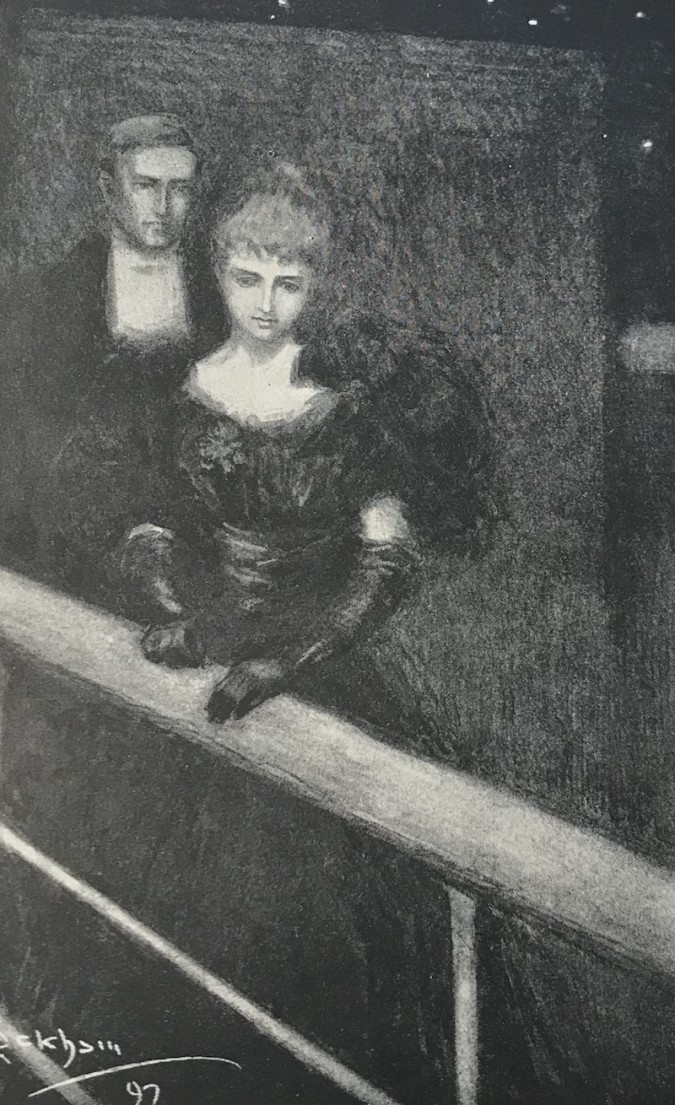
“Oh, Luke,” she whispered at length “I can’t be poor – I can’t.” (The Grey Lady, 1897)
The earliest pieces in the collection date from 1895 when Rackham provided four illustrations for an anthology of stories by Washington Irving, The Sketch Book of Geoffrey Crayon. The volumes are beautifully produced with deep blue cloth covers embossed with elaborate gilt tooling and the pages have decorative borders. Stories include well known titles, such as The Legend of Sleepy Hollow and Rip van Winkle. Rackham's four drawings are amongst a total of 32 black and white plates by various artists
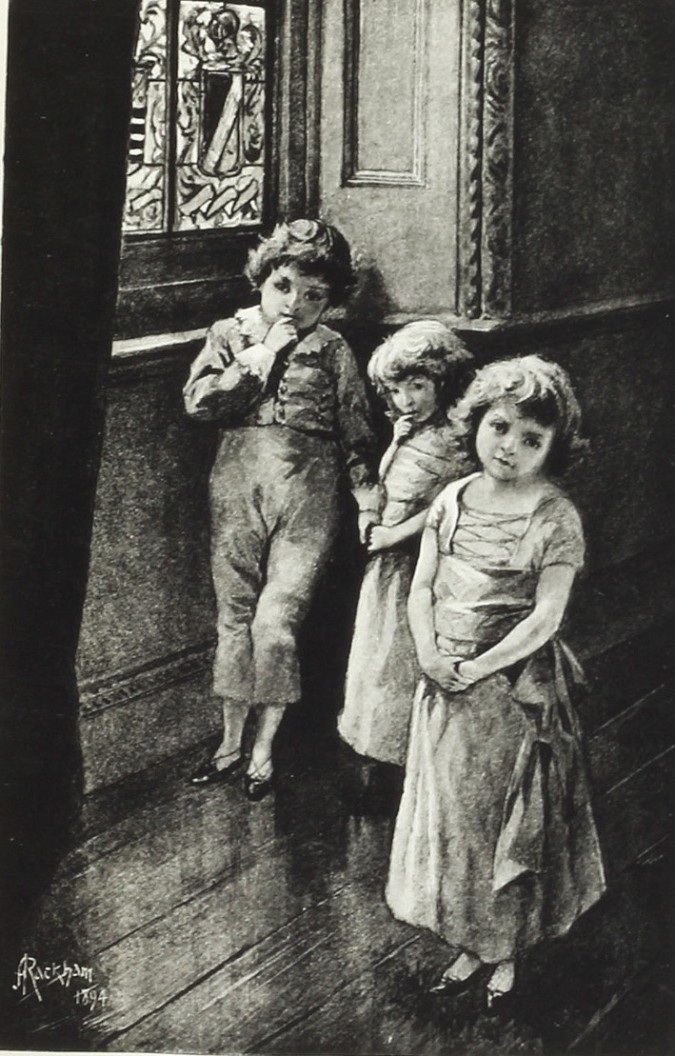
"One of the most beautiful little fairy groups", Sketch Book of Geoffrey Crayon
The same year we gain an initial glimpse of Arthur Rackham's true individual style in his drawings for the Zankiwank and the Bletherwitch. "It is... with the illustrations for The Zankiwank and the Bletherwitch that the true Rackham fantasy begins to emerge." (Fred Gettings). This printed proof for the title page for Zankiwank and the Bletherwitch hints at the fantastical creations that will come from the artist's pen in the future, fairies, goblins and insects merge in a flurry of ink.
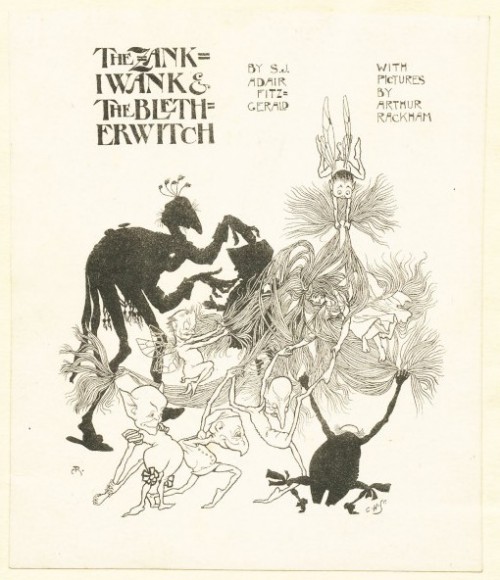
Zankiwank and Bletherwitch title page proof
During the 1890's and early years of the twentieth century Rackham provided a number of drawings for Little Folks Magazine. The magazines offered readers a miscellany of stories and articles and were illustrated by a variety of artists, many of whom would go on to be leading lights in the Golden Age of Book Illustration, including brothers Charles and William Heath Robinson and New Zealander, Harry Rountree. "It would be quite accurate to say that it was through his dealings with Little Folks that Rackham found himself... his realm fairy land, his incentive force to be fantasy, and his love to be moved to humour." (Gettings) Rackham's drawings began to take on his familiar style, full of wit, mischief and movement.
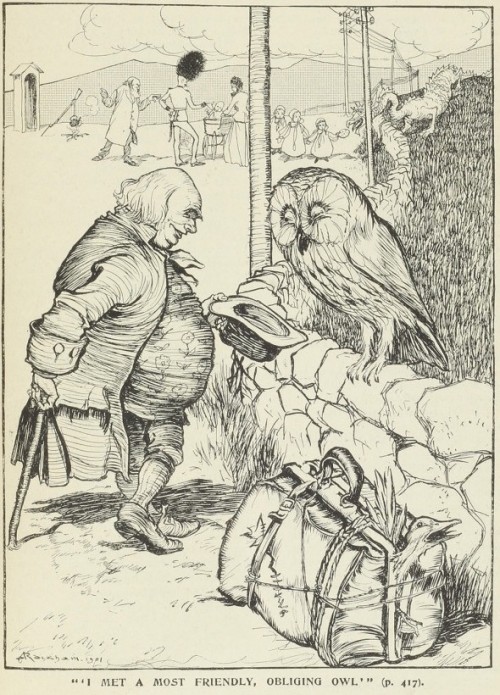
From a Little Folks story The Trouble it Caused by Maggie Browne
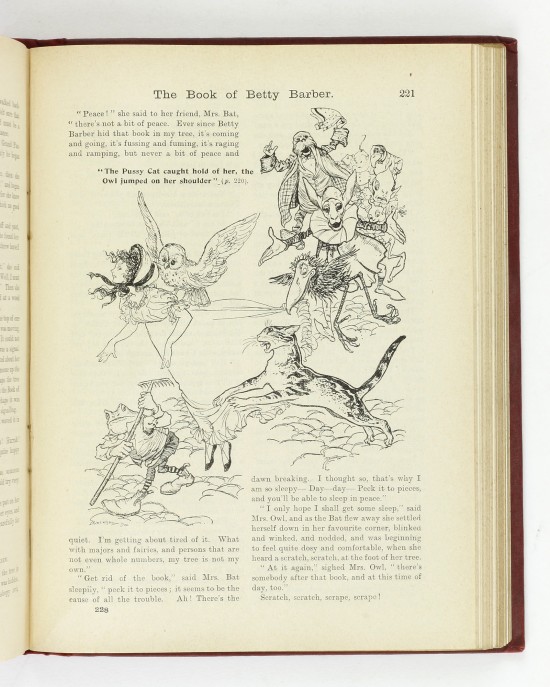
Betty Barber in Little Folks, 1901
Some of the stories in Little Folks were later published in book form, as is the case with this drawing from 1901 for a Little Folks story by Maggie Browne entitled The Book of Betty Baber, which almost a decade was produced as a book in its own right, with some of Rackham's line drawings now being coloured by Harry Rountree.
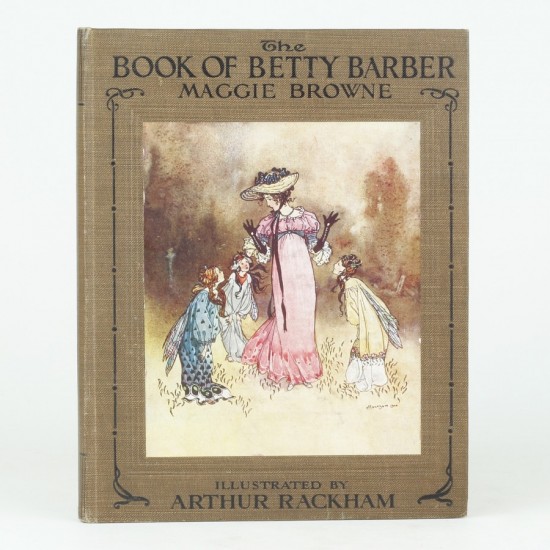
The Book of Betty Barber, 1910
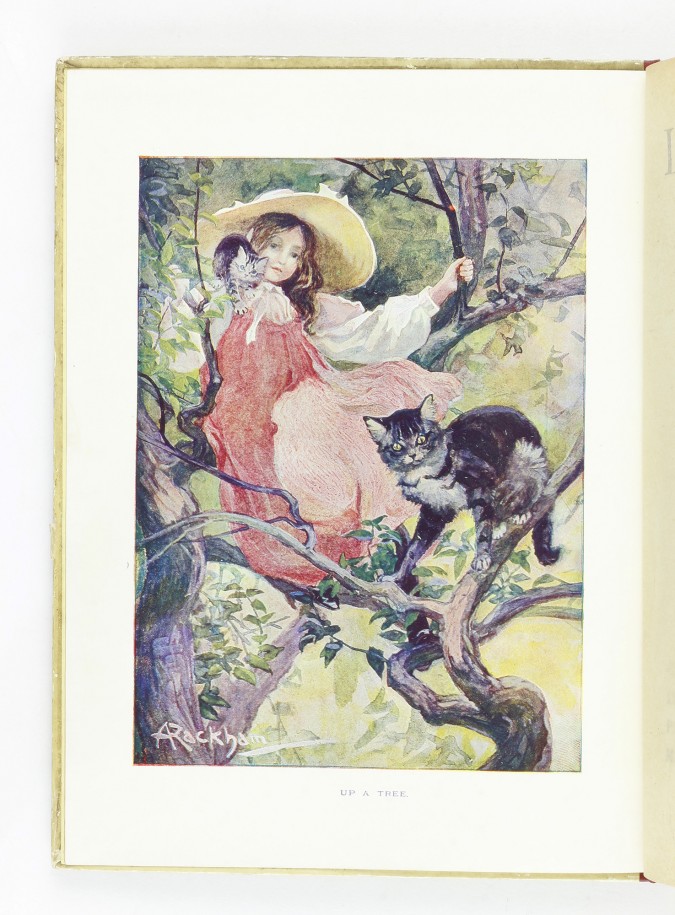
"Up a Tree", the frontispiece to Little Folks 1900 Annual
Within Rackham's drawings for Little Folks familiar characters begin to appear, the prowling cat seen above is to make an appearance in Rackham's drawings for Grimm's Fairy Tales, both in 1900 and 1909. Crows, Owls, witches and goblins will all be drawn over and again in the coming years.
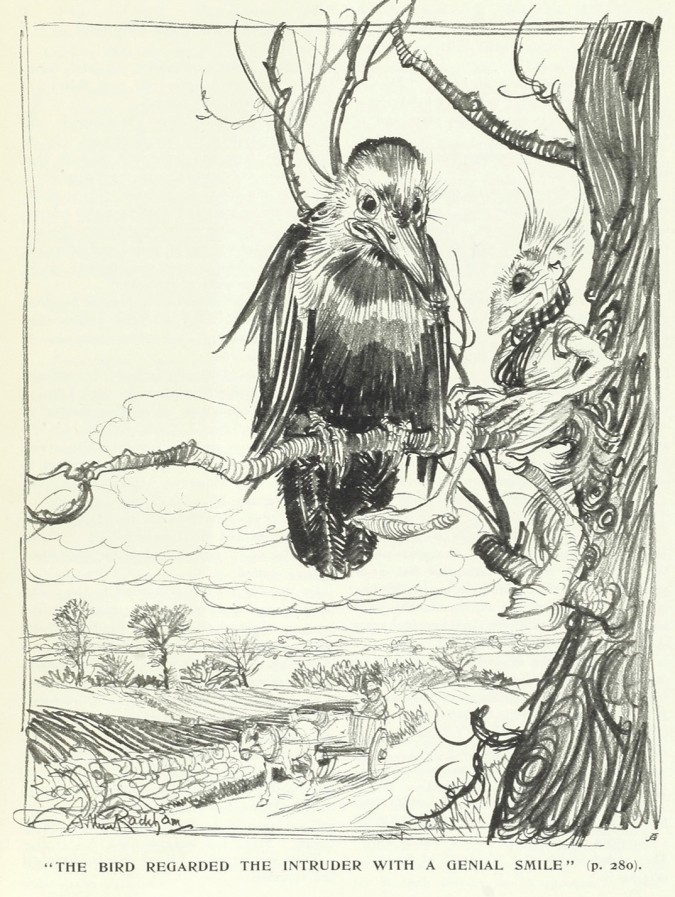
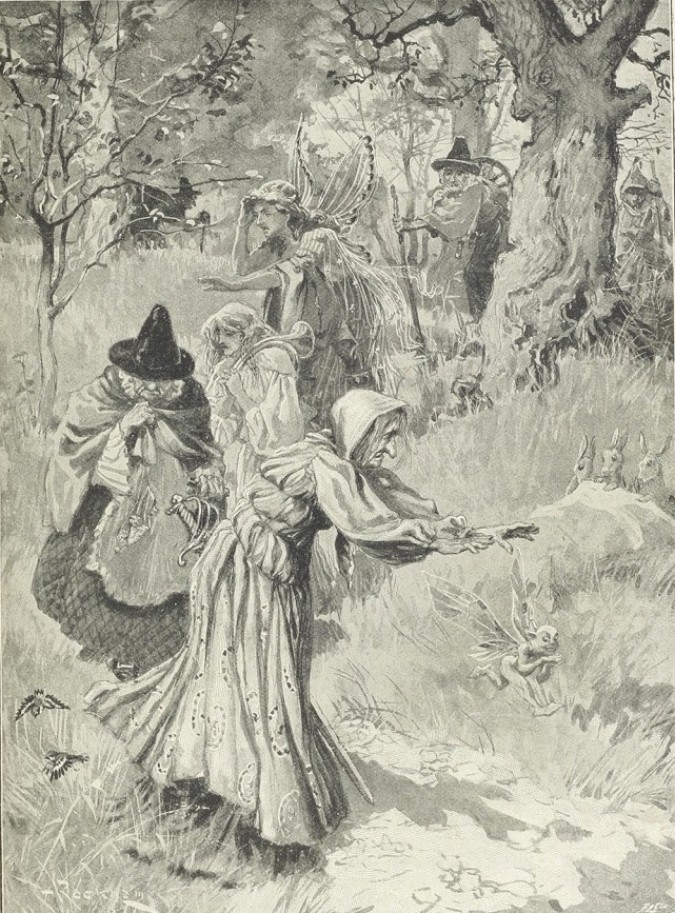
Gift Fairies, Little Folks, 1896
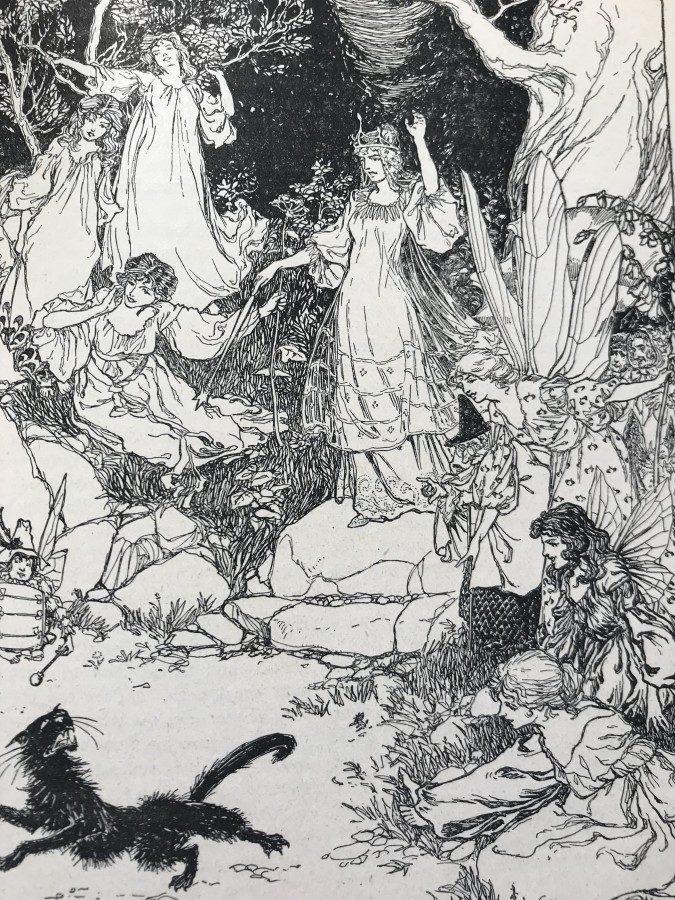
"Go! Be a stray cat." The Surprising Adventures of Tuppy and Tue, Little Folks, 1896
Myths and Legends are well represented in the artist's work and amongst his Little Folks drawings are two tone illustrations to Greek Legends, such as the one shown below.
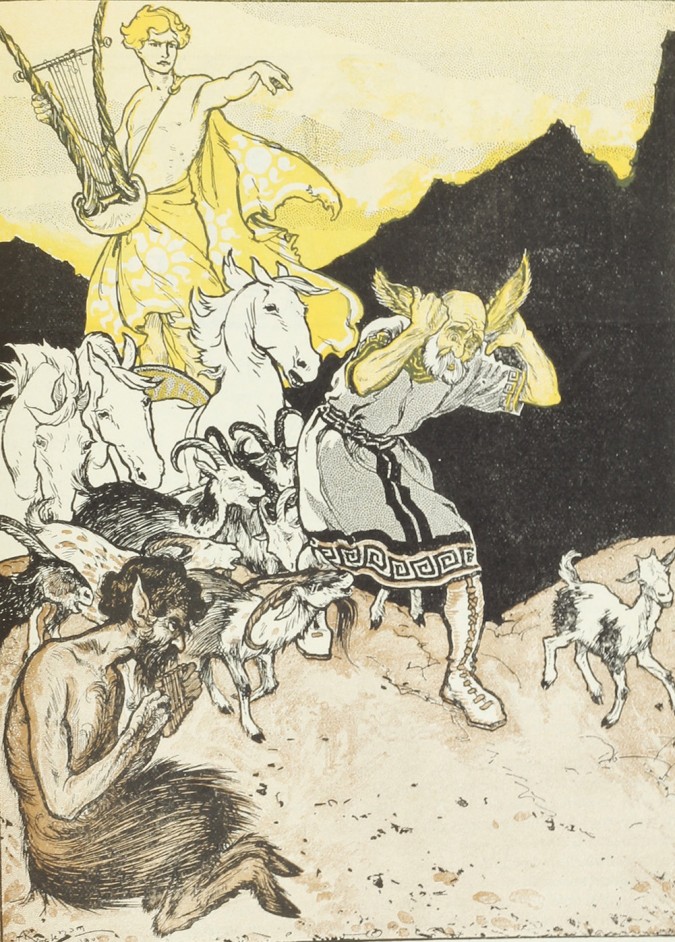
Harry and Herodotus, Little Folks 1900
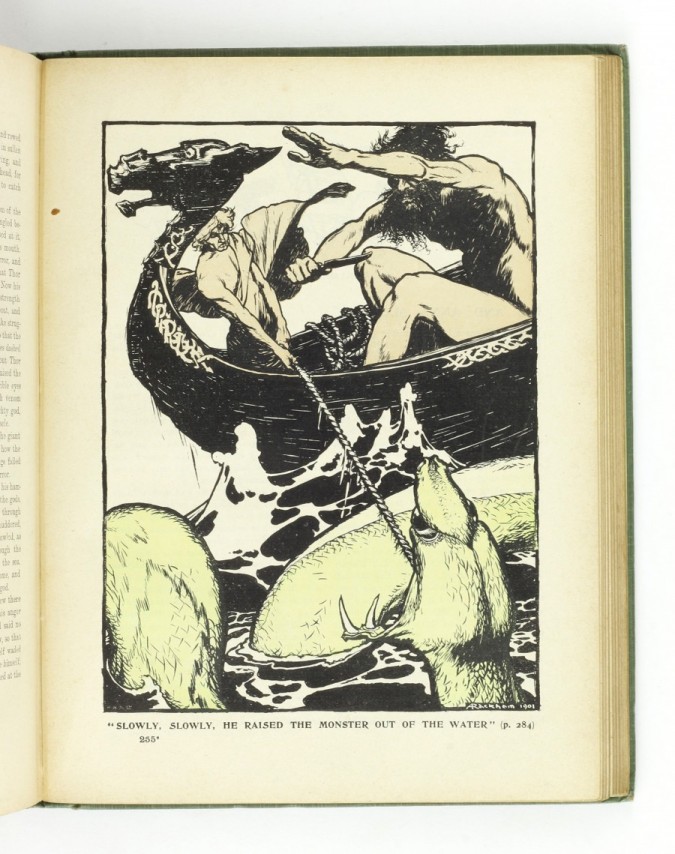
Stories from Edda, Norse Mythology, Little Folks 1901
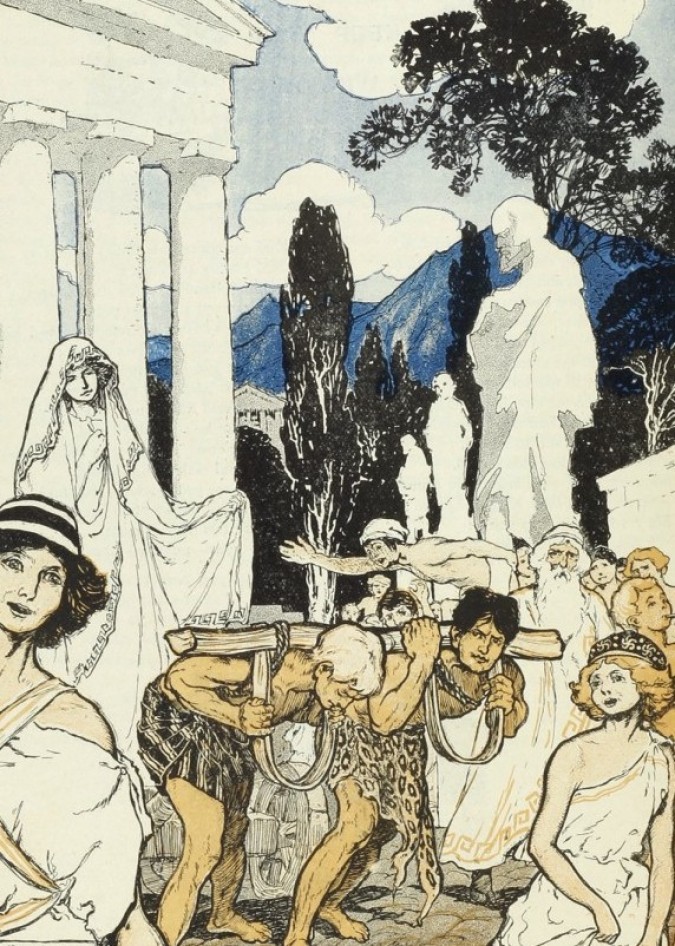
Harry and Herodotus, Little Folks 1900
Whilst English legends are equally well represented in the form of The Ingoldsby Legends, whose author, Thomas Ingoldsby, wrote Kentish ghost stories and poetry. The Ingoldsby Legends was to be illustrated more than once by Rackham, firstly in 1898 and in 1907 an enlarged full colour edition was produced as a Christmas Gift Book.
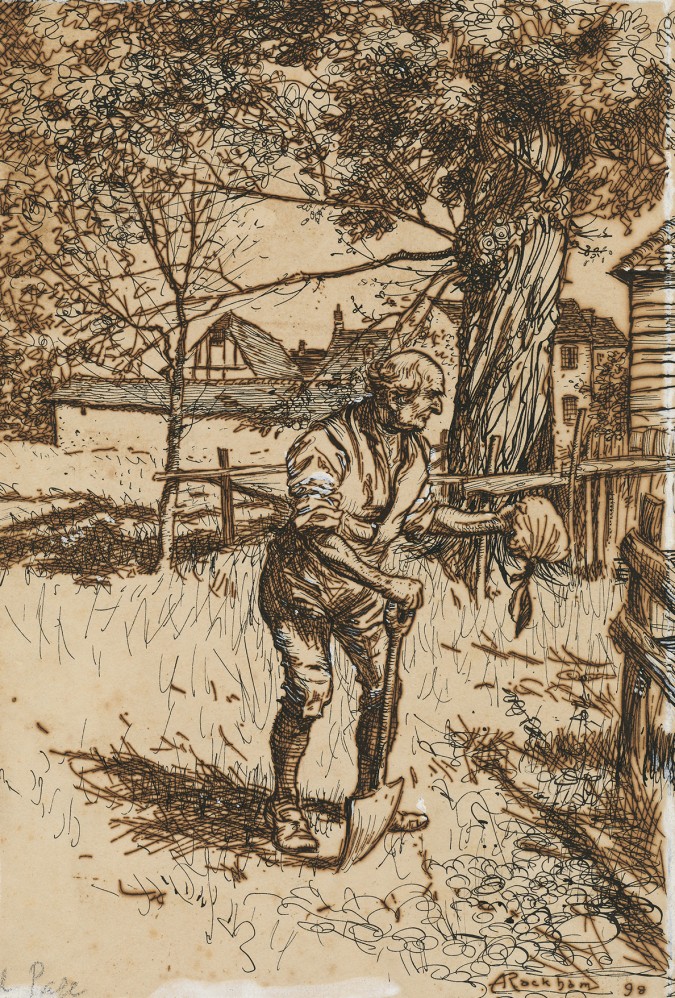
This original pen and ink drawing appears in the 1898 edition of Ingoldsby Legends
As the turn of the century approached popular novels started to include colour illustrations, like the example below from Two Years Before the Mast.
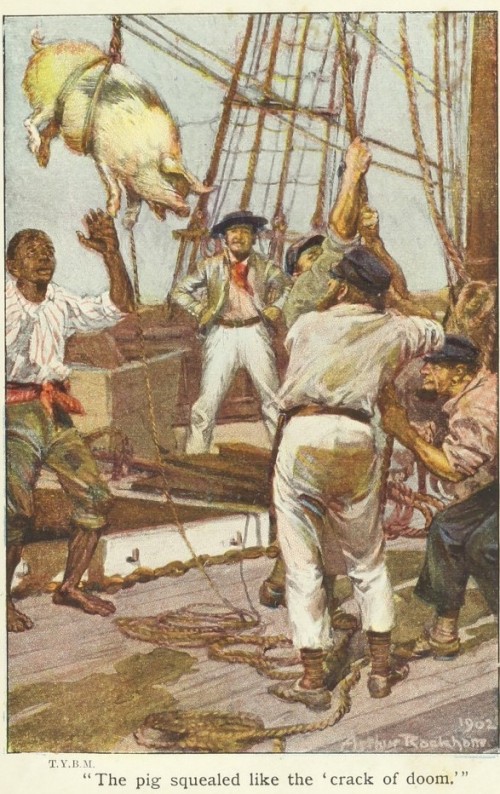
If you ask the mordern reader what they know of Arthur Rackham's work they will usually reply that he provided dark and errie illustrations to accompany fairy tales. Indeed the sometimes gruesome fantasy of stories by the Brothers Grimm were amongst the earliest books to be fully illustrated by the artist in 1900. The book was issued on two bindings, a traditional style blue cloth and a rather charming pictorial cloth, as seen below, with a colour frontispiece and 99 black and white drawings. Like the Ingoldsby Legends Rackham would revisit Grimm's stories, when in 1909 he produced 40 ink and watercolour drawings for a large and sumptuous volume published by Constable, yet the 1900 version is something of a gem, with page after page of Rackham's delicate line drawings.
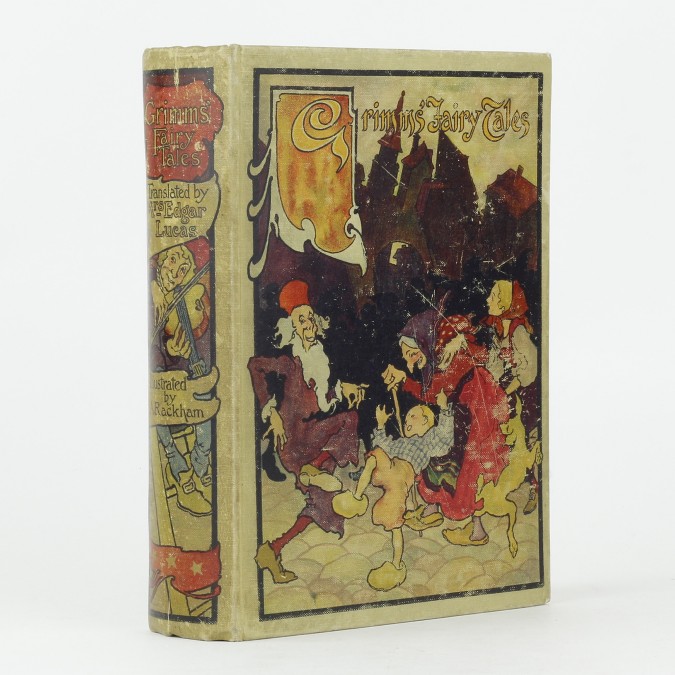
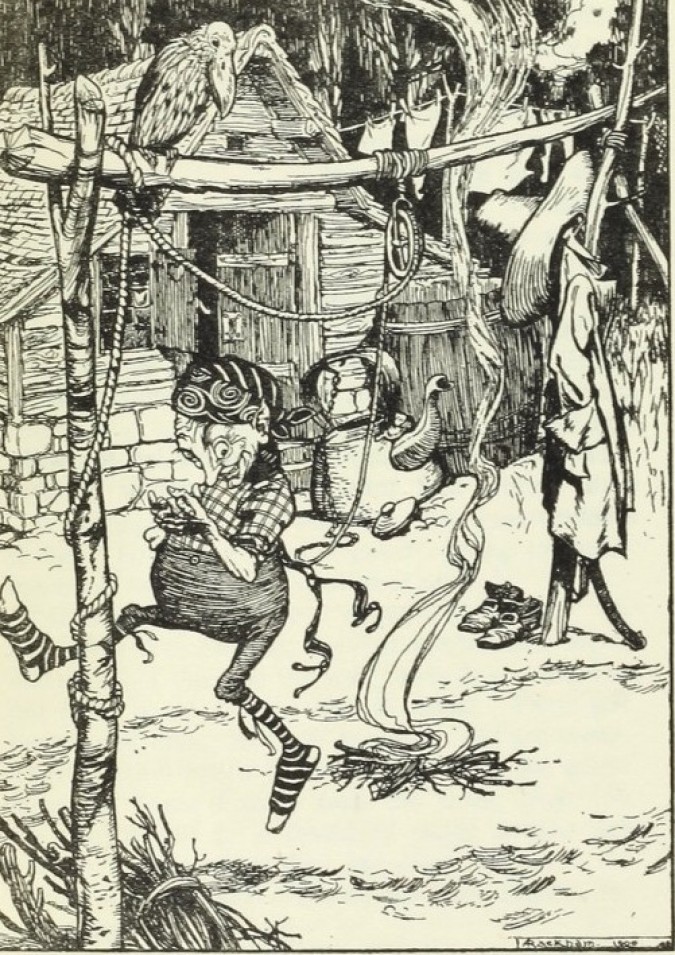
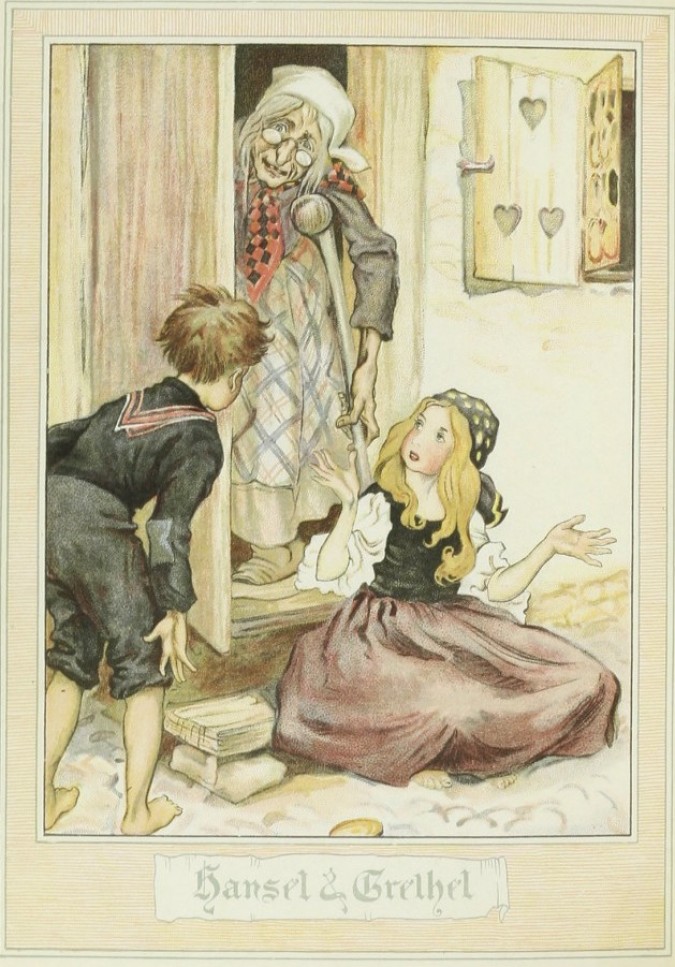
Frontispiece from 1900 Grimm's Fairy Tales
Arthur Rackham's work comes in many forms, with prices for collectable books beginning at as little as £20 and soaring for the finely produced deluxe editions. To view more of his books and artwork browse here.
You might also like our blog: The fairies, elves and athropomorphic trees of Arthur Rackham
Comments
Recent Posts
- The Evolution of Crime
- Tour The Bookshop On Your Screen
- The Genesis of Mr. Toad: A Short Publication History of The Wind In The Willows
- Frank Hurley's 'South'
- The "Other" Florence Harrison
- Picturing Enid Blyton
- Advent Calendar of Illustration 2020
- Depicting Jeeves and Wooster
- Evelyn Waugh Reviews Nancy Mitford
- The Envelope Booklets of T.N. Foulis
- "To Die Like English Gentlemen"
- Kay Nielsen's Fantasy World
- A Brief Look at Woodcut Illustration
- The Wealth Of Nations by Adam Smith
- What Big Stories You Have: Brothers Grimm
- Shackleton's Antarctic Career
- Inspiring Errol Le Cain's Fantasy Artwork
- Charlie & The Great Glass Elevator
- Firsts London - An Audio Tour Of Our Booth
- Jessie M. King's Poetic Art, Books & Jewellery
Blog Archive
- January 2024 (1)
- January 2023 (1)
- August 2022 (1)
- January 2022 (1)
- February 2021 (1)
- January 2021 (1)
- December 2020 (1)
- August 2020 (1)
- July 2020 (2)
- March 2020 (3)
- February 2020 (2)
- October 2019 (2)
- July 2019 (2)
- May 2019 (1)
- April 2019 (1)
- March 2019 (2)
- February 2019 (1)
- December 2018 (1)
- November 2018 (1)
- October 2018 (2)
Gary Swinson 18/May/2018 21:54
Thanks for posting, Sam. I found a couple here I had not seen previously!